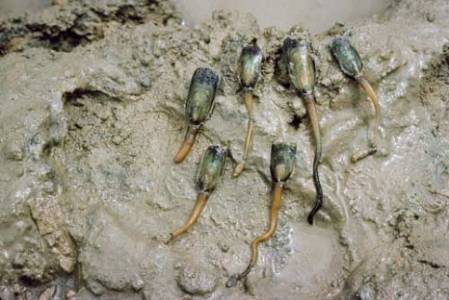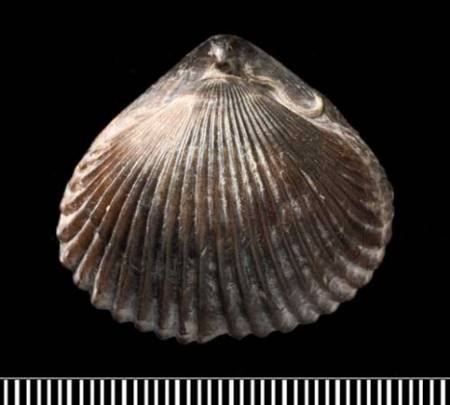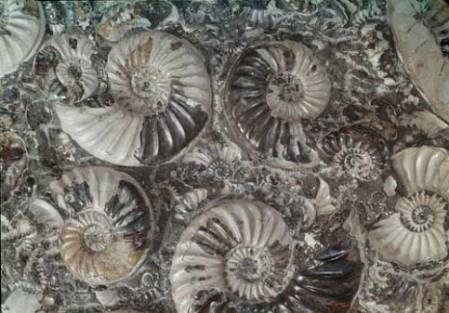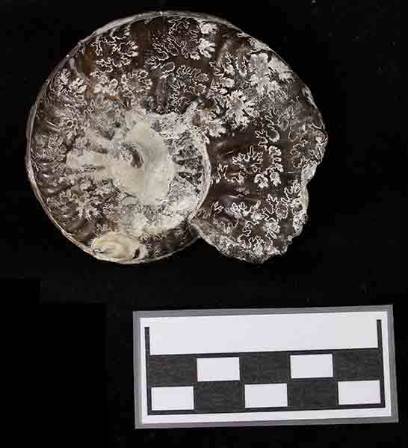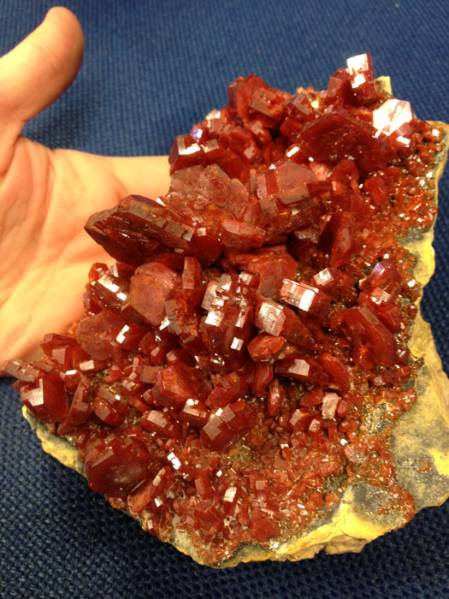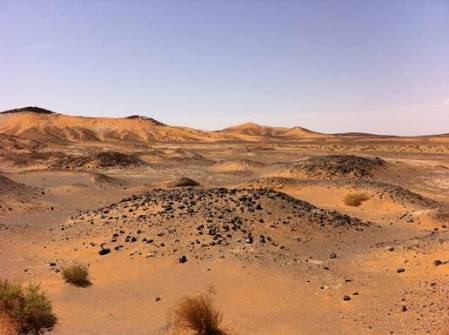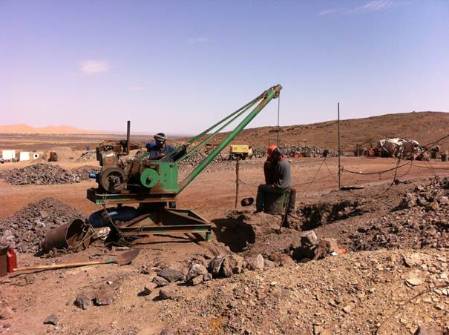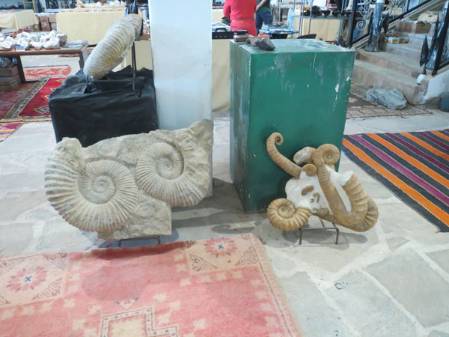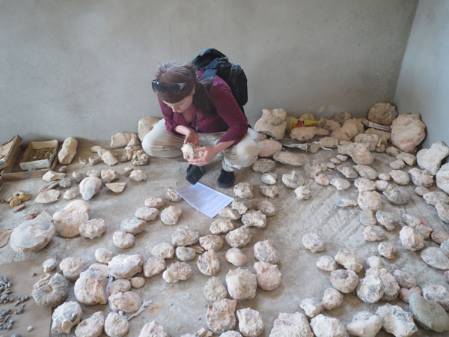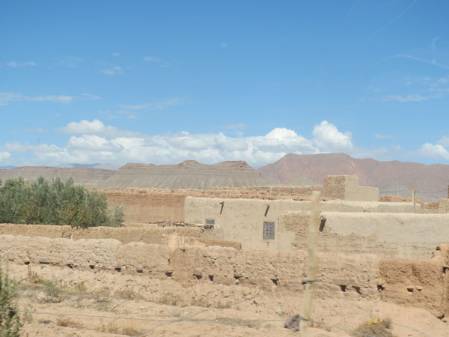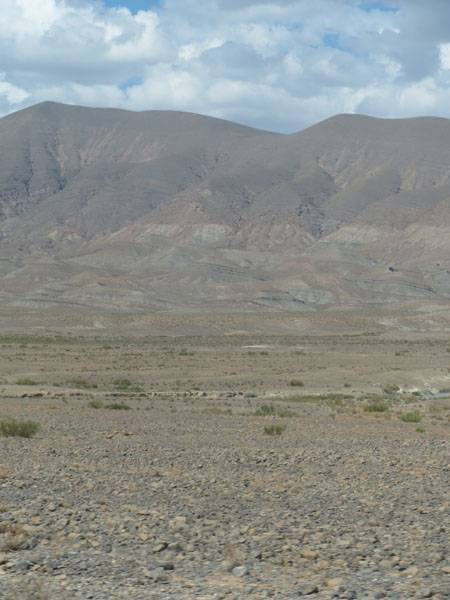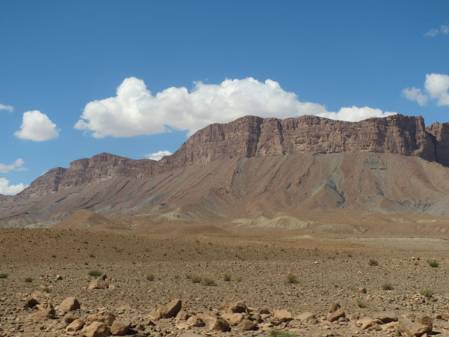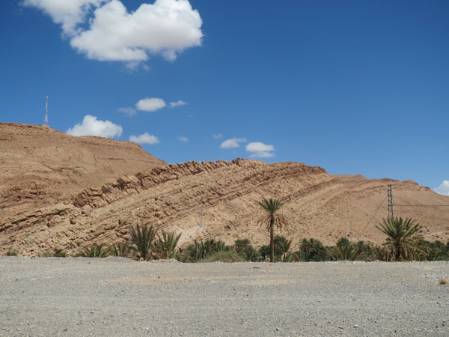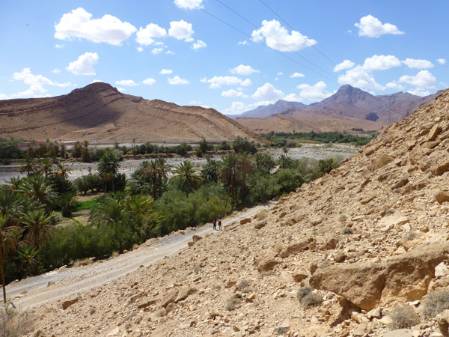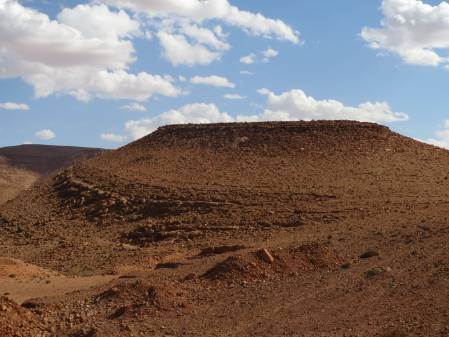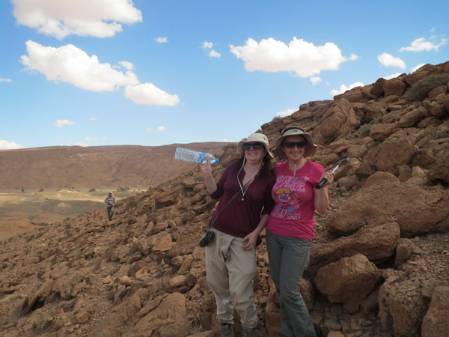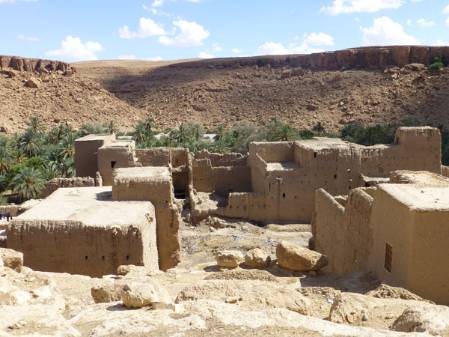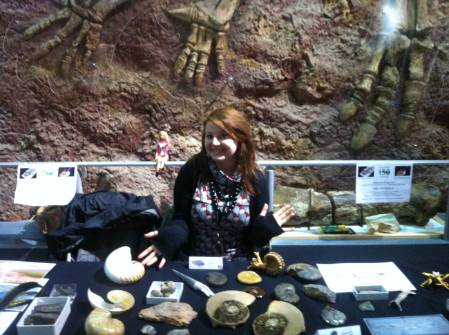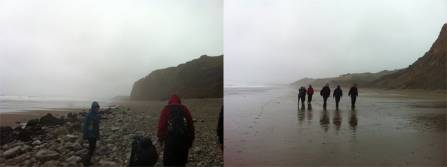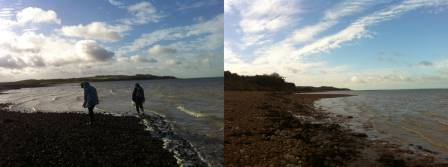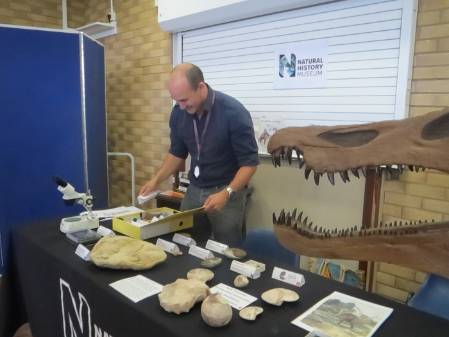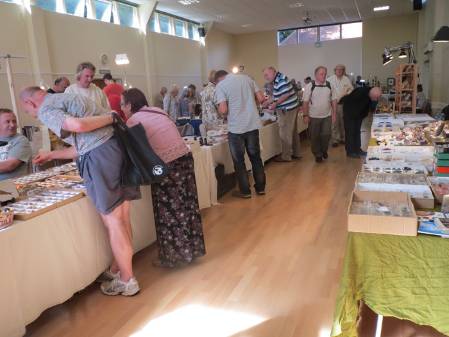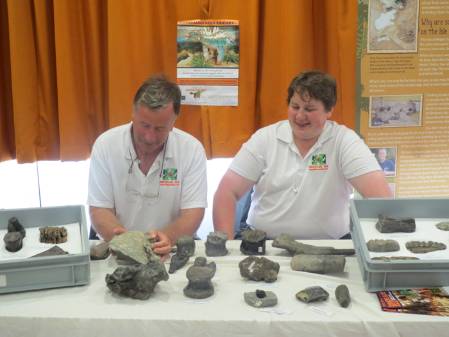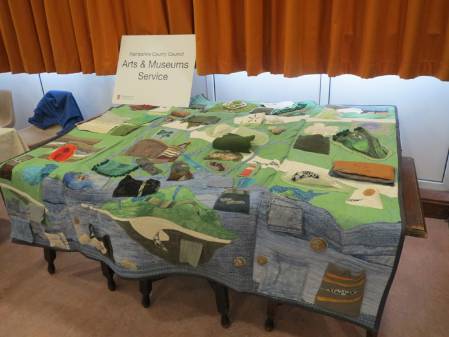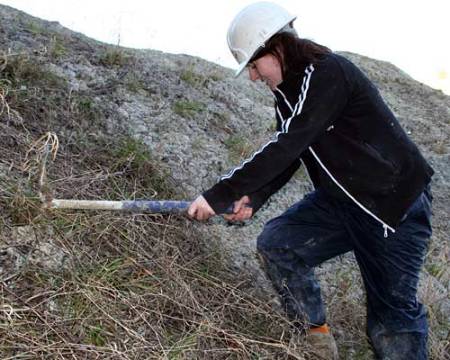The introduction to this trip and day 1 are covered here by Emma Bernard as we're both taking you through our adventures in Morocco.
Friday 20 September started out very sedately, we got into the jeeps and began our 235km drive to Arzou. However, about an hour into the drive we started to smell something terrible. In the rear of the jeep we assumed it was something being burnt somewhere, it was only when we saw the middle jeep pull over we realised different.
Out leapt the passengers from the smoking jeep. Luckily we were near a town with a garage where the driver managed to take the stricken jeep. We all crammed into the remaining two vehicles, with the luggage on the roof rack and continued our drive. The plan upon reaching Arzou was to split the group, with mineralogists going to a volcano and the palaeontologists going to Bakrit to search for sharks teeth. However, just before we got to the volcano we had a quick stop in a cedar forest to visit the monkeys that live there.

The Monkeys near Arzou
As I've never been to a volcano and collected scientific samples, I asked whether or not I would be able to disband from the palaeontologists and go with the mineralogists. Luckily, this request was granted and I was whisked off with Dr Emma Humphries-Williams, Mark Graham (a fellow palaeontological deserter!) and the Ores Curator. Emma was looking for mantle xenoliths as part of her research on understanding how volcanoes form.
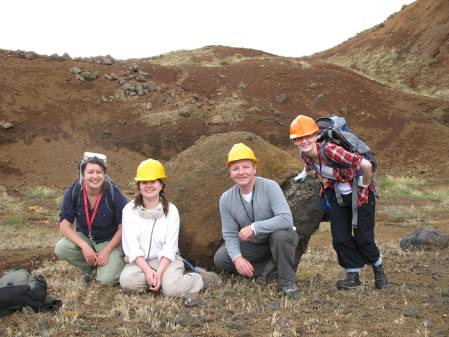
Team Mantle Xenolith.
From left to right: Emma Humphries-Williams, Me (Zoe Hughes), Mark Graham and the Ores Curator.
Both groups arrived at the volcano and we had an initial wander about with a quick description of how it had formed. Then back to the jeeps for a field work spread of tinned tuna, the most amazing olives and a traditional Moroccan flatbread (since arriving back to the UK I have been missing these simple but fantastic lunches!)
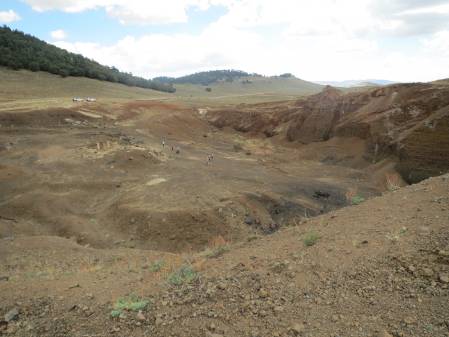
The quarry dug into the side of the volcano. You can see our jeeps in the distance and some of the group in the centre. The cone itself is off to the right, beyond the edge of the photograph.

The quarry from a different angle. Behind me (I took this photo) is the crater.

This is the crater, constructed from a series of photos. The quarry above is now behind me.
After lunch the rest of the palaeontologists got in their jeeps in order to go to Bakrit to search for sharks teeth. We descended into the quarry next to the volcano. We hunted for xenoliths, with Emma instructing us on which rocks were likely to contain them (the heavy ones). When we had a pile we all took in turns to break them open to (hopefully) reveal the green xenolith inside. There were some small lava flows present that we took samples from for Emma’s research into the volcano.
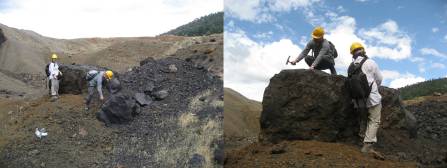
Mark Graham and me taking some rock samples.
Mantle xenoliths are fragments of rock from deep below the Earth’s surface (up to 70 kilometres deep!). These fragments have been picked up by the magma as it ascends from the mantle. Explosions fragment the surrounding mantle and allow it to be carried in the magma to the Earth’s surface within a matter of days. Emma is interested in these fragments because they tell us about how the magma travels to the Earth’s surface and also where the magma comes from. She does this by using lasers and acid (not together) in the lab to reveal the chemistry of the minerals within the rock.
Most mantle xenoliths are made of olivine, clinopyroxene, orthopyroxene and spinel; garnet can be present depending on the pressure present when the xenolith was extracted from the mantle.
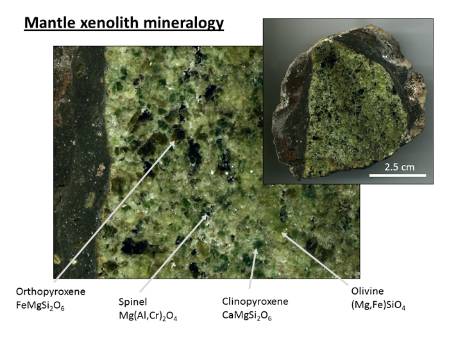
What a mantle xenolith looks like and the minerals it contains. This one was found at the volcano in Arzou on this trip. It has been cut and polished since we returned to the Musuem.
With the xenoliths we found in Morocco, Emma hopes to find out whether or not there are any unusual minerals present which will tell her about any processes that may have changed the mantle composition and therefore may result in volcanoes forming in the area more easily. This is particularly interesting in this area of Morocco as most volcanoes normally form at the edges of tectonic plates, where either the plates are moving apart (like at the mid-Atlantic ridge) or where one plate is colliding with another creating a subduction zone. However Morocco is far from the edge of a tectonic plate (The closest active one is the mid-Atlantic ridge or the East African rift). Emma is using the mantle xenoliths to work out why there are (extinct) volcanoes in Morocco (and Africa as a whole).
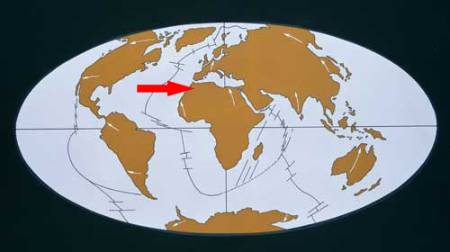
The tectonic plates outlines in black. The arrow shows the approximate location of the volcano at Arzou and its location at the centre of the plate.
While we were at the volcano it started to rain rather heavily. As my rain coat had been driven off in the jeep with the palaeontologists, I had to use my imagination to keep warm and dry by fashioning a bin bag into a coat.
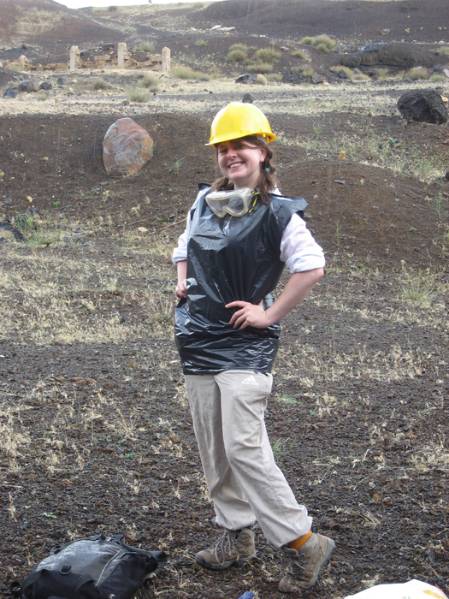
My high fashion attempt to keep dry in the rain.
When our time at the volcano was drawing to an end, Emma had a final sort through of her samples for the best ones to bring back to the Museum. As each xenolith takes some time to process and they are rather heavy, only really good xenoliths are particularly useful.
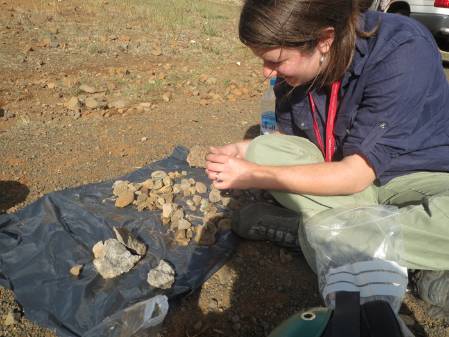
Emma happily sorting out her haul of xenoliths.
Off we went to meet the palaeontologists so we could drive to our hotel in convoy for the night in Midelt...
Don't forget to check the and come back here for more as Emma and I are writing about each day in turn. Many, many thanks to Emma Humphries-Williams for helping me to write this post (making sure I got the science of xenoliths correct because it is not my field of expertise) and providing the lovely xenolith images!



